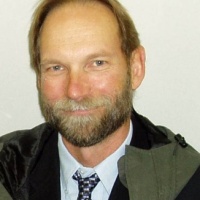
RESEARCH INTERESTS
- Geologic interpretation of gravity and magnetic anomalies
- Digital compilation of magnetic surveys
- Public release of digital magnetic grids and image products
- Innovative display of geophysical information
- Methods for characterizing uncertainty in geophysical interpretation
CURRENT RESEARCH
I am working with other members of the GEOMAG team on an update to the EMAG2 global magnetic anomaly compilation. The goal is to improve the resolution and reliability of the compilation to improve its applicability to geologic and tectonic interpretation.
I am also a member of the joint State Department/NOAA/USGS effort to map and describe the extent of the United States Extended Continental Shelf according to the definitions in the United Nations’ Law of the Sea, Article 76. My role includes geophysical interpretation and characterization as a part of the Arctic Integrated Regional Team as well as coordinator of ECS Documentation Preparation within the Boulder-based Project Office.
I am compiling a new aeromagnetic compilation for Alaska to replace the previous digital compilation released in 1999.

I am also working with USGS colleagues on geophysical and geological reconciliation of the geologic “boundary fault” between Alaska and the Yukon (see Earth article citation below).
SELECTED CITATIONS
- Saltus, R., 2013, Tackling “boundary faults” across the Alaska-Yukon border – A report from the field: Earth Magazine, October 2013, p. 8-9.
- Saltus, R.W., and Blakely, R.J., 2011, Unique Geologic Insights from “Non-Unique” Gravity and Magnetic Interpretation: GSA Today, v. 21, n. 12, p. 4-10.
- Saltus, R.W., Miller, E.L., and Gaina, Carmen, 2011, Regional magnetic domains of the circum-Arctic – A framework for geodynamic interpretation, in Spencer et al., eds., Arctic Petroleum Geology, Geological Society Memoir No. 35, p. 49-60.
- Haeussler, P.J., and Saltus, R.W., 2011, Location and extent of Tertiary structures in Cook Inlet basin, Alaska, and mantle dynamics that focus deformation and subsidence: USGS PP 1776 D, p. 1-30.